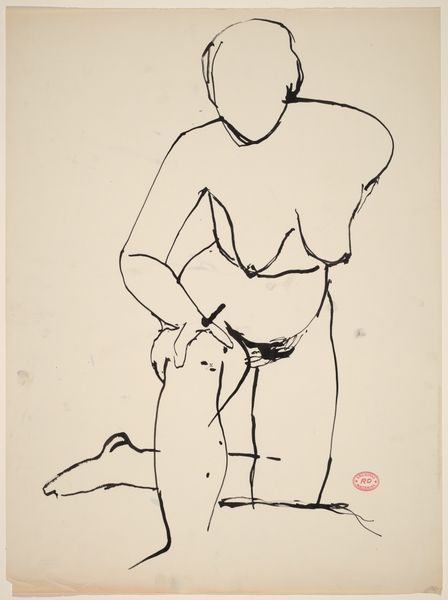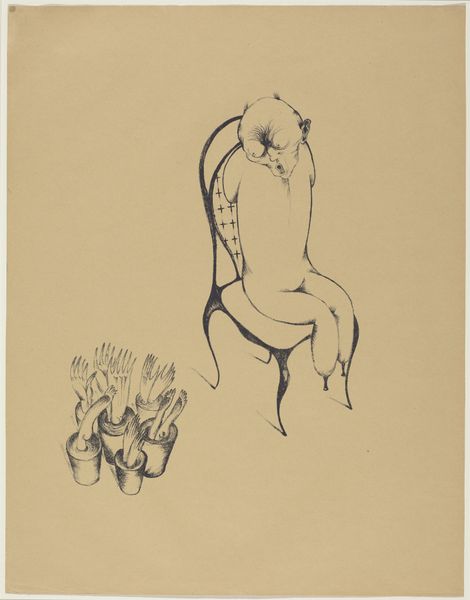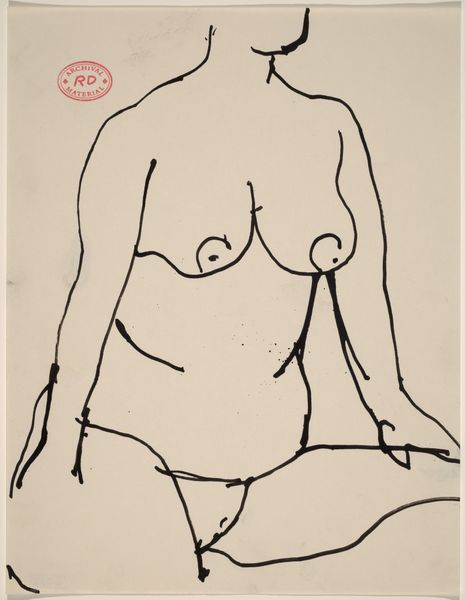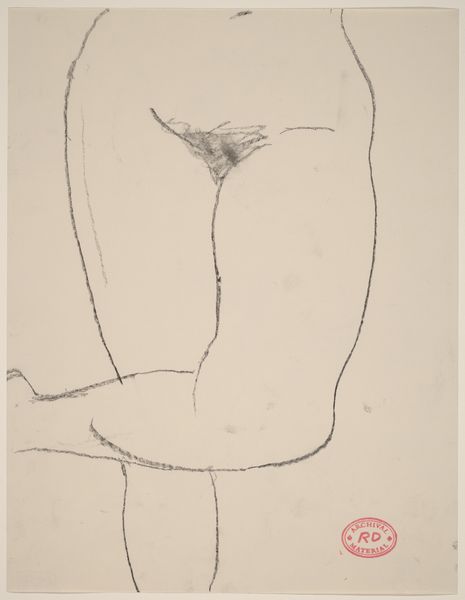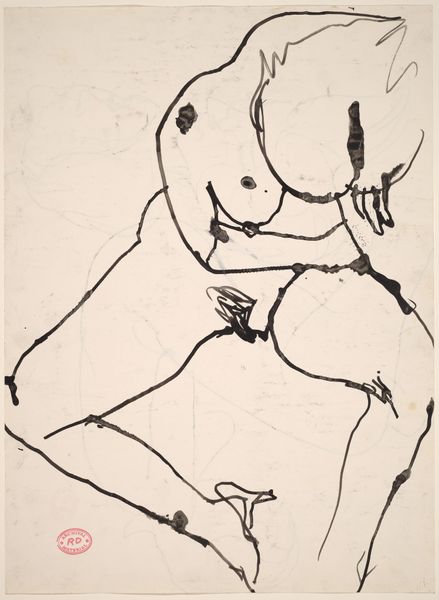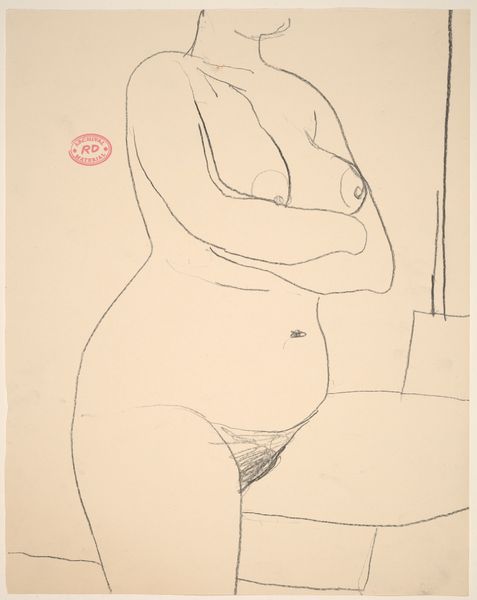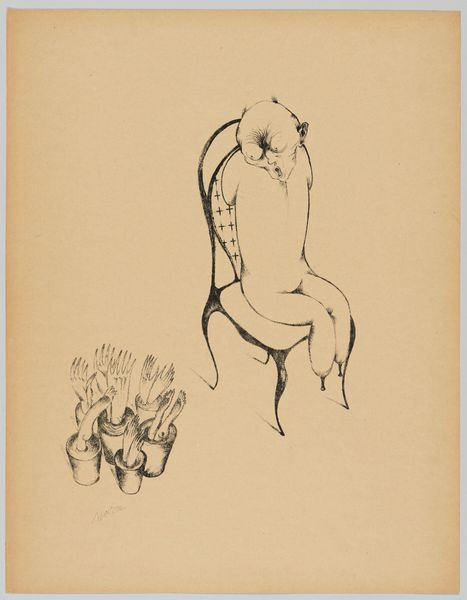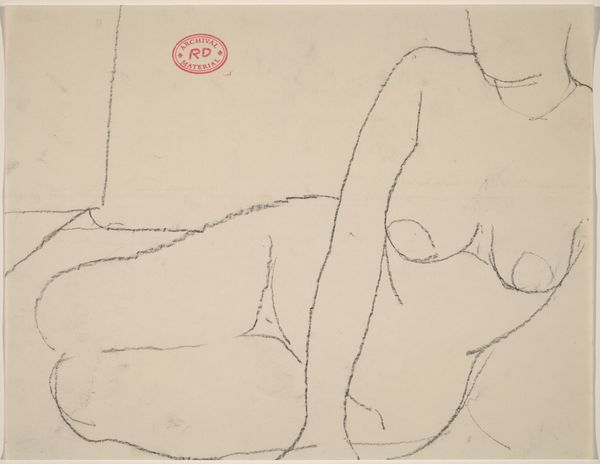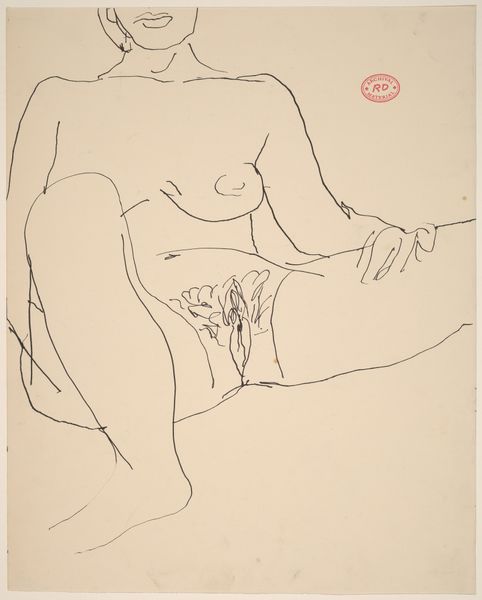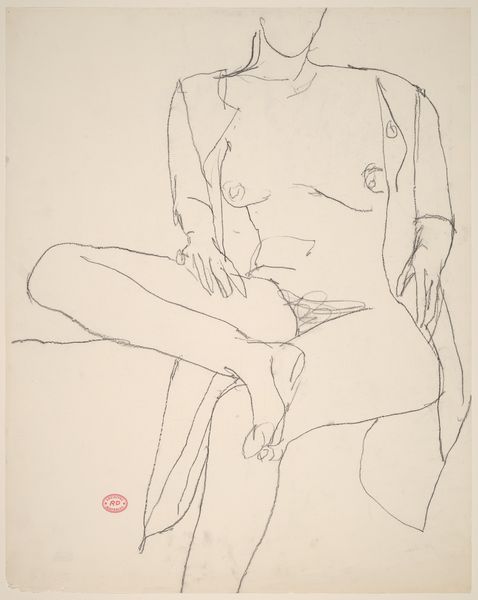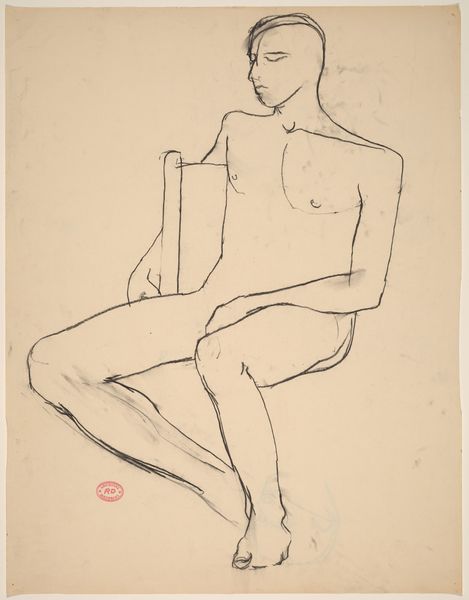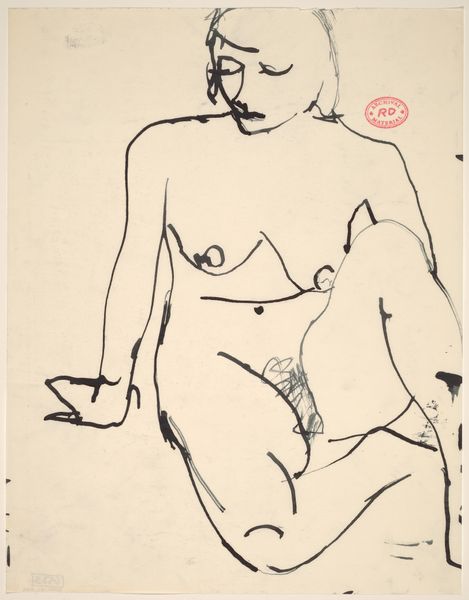
drawing, ink
#
portrait
#
drawing
#
caricature
#
figuration
#
ink
#
geometric
#
portrait drawing
#
bauhaus
Dimensions: height 488 mm, width 341 mm
Copyright: Rijks Museum: Open Domain
Curator: Oskar Schlemmer's "Zittende Figuur," created circa 1922, intrigues through its geometric abstraction. Crafted in ink, it presents a figure that almost seems to be a schematic diagram rather than a realistic portrayal. Editor: It feels cold, doesn't it? Detached. Despite the subject matter being a seated figure, there’s a decided lack of human warmth; it is clinical, maybe even architectural, in its precision. Curator: Precisely. Schlemmer was deeply engaged with the Bauhaus movement, which sought to unify art, craft, and technology. Note how the figure is broken down into essential forms—circles, lines, cylinders—and reconstituted. Editor: That integration goes even deeper, though. Looking at it, the symbolic aspects feel dominant. Circles and orbs suggest completion, a kind of contained self. The lines though…those linear penetrations into the core structures convey a sense of disruption, or potential violation. Curator: Interesting, that juxtaposition. Formally, one can analyze the play between line weight and spatial arrangement. The negative space is as crucial as the drawn lines in defining the form. The ink work displays the balance of a structuralist mind. Editor: The limited palette of a delicate background offset with sharp strokes of ink also highlights a stark divide between the artificial and organic. The sitting posture is innately human, a sign of rest or contemplation. Curator: Quite right. In looking closer at its composition, the way the planes intersect—consider the central axis running from head to abdomen—creates a kind of spatial tension. The image almost feels like a technical study in rendering of form in only two dimensions. Editor: Perhaps the clinical detachment comes as a necessary defense. If we read the composition anthropologically, the linear additions—these 'violations'—suggest an invasion into private space, or being clinically exposed, the posture perhaps denotes more the attitude of exposure rather than self containment? Curator: Perhaps a fair insight! Schlemmer provides a structured inquiry into representational strategy. Editor: Ultimately, this work highlights the intrinsic relationship that geometry has played in articulating identity for almost a century. A dialogue on going beyond superficial observation.
Comments
No comments
Be the first to comment and join the conversation on the ultimate creative platform.

